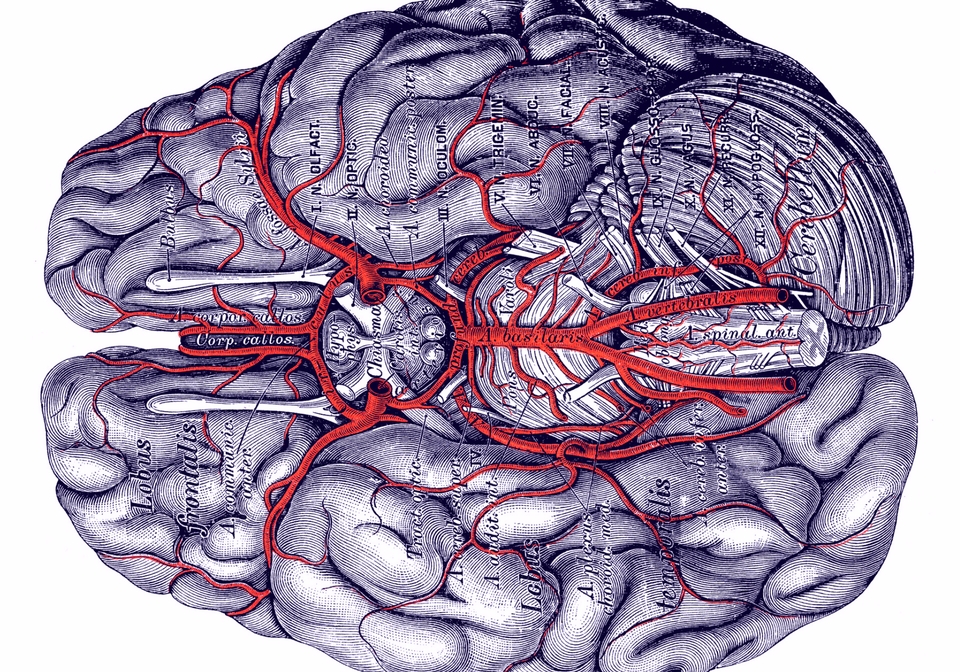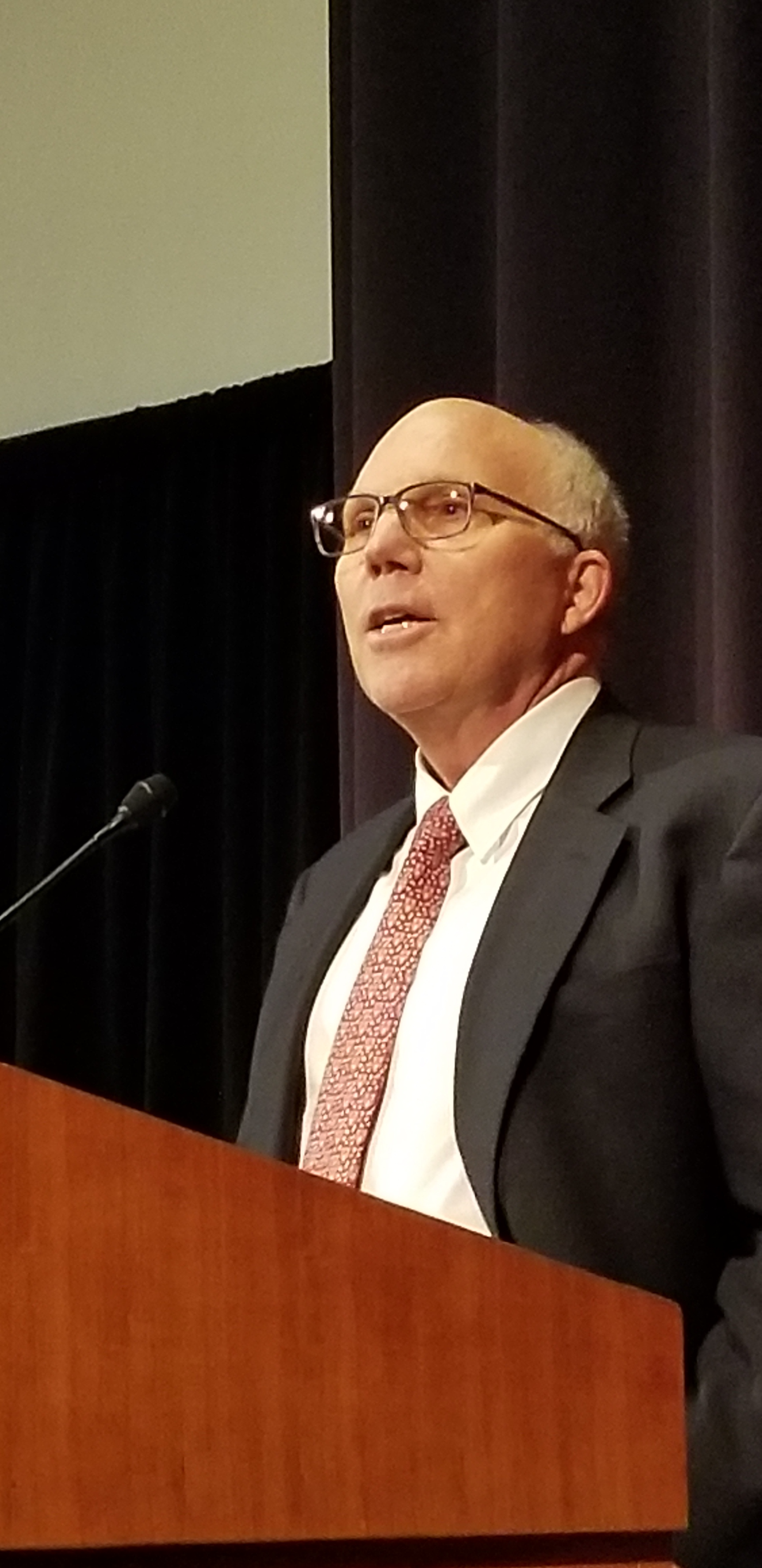Defining Death — Cultural, Scientific and Legal Complexity
Implications for Hospital Care, Transplantation and Biotechnology
Robert D. Truog
Frances Glessner Lee Distinguished Professor of Bioethics, Anaesthesia, & Pediatrics
Senior Associate in Critical Care Medicine, Boston Children's Hospital &
Center for Bioethics, Department of Global Health and Social Medicine, Harvard Medical School
Sponsored by PSW Science Members Rip Rawlings and Erin Felger
About the Lecture

All of us have an intuitive understanding of what it means to be dead. As medical technology has advanced, however, the situation has become more complicated. When Christian Barnard performed the first heart transplant in 1967, the central ethical and legal question was whether the donor was “dead” at the time his heart was removed, or whether Barnard had actually killed the donor in an attempt to save the life of another.
For organ transplantation to advance, this question needed a clear answer. So in 1981 the Uniform Law Commission adopted the Uniform Determination of Death Act (UDDA), which allowed doctors to diagnose death by either of two criteria – 1) the irreversible cessation of circulatory and respiratory functions (biological death), or 2) the complete absence of all functions of the entire brain (brain death). The first represented the “traditional” or “biological” understanding of death. The medical consultants to the legislators claimed that the second criterion was equivalent to the first, since without the brain, the body quickly disintegrates, with the patient having cardiopulmonary arrest and biological death within no more than a few days.
The UDDA worked well for decades, and enabled a system of organ procurement and transplantation that has saved the lives of tens of thousands of patients. Yet in the last few years, we have learned that it is based on a flawed premise. It turns out that patients diagnosed as brain-dead do not necessarily have cardiopulmonary arrest within a week – in fact, if kept on a ventilator and provided with nutrition, these patients can live for many years.
In other words, we now know that brain death is not just a way of diagnosing imminent biological death. Instead, it is a fundamentally new understanding of human death, based on the loss of neurological function. To be clear, brain death represents an extremely severe form of neurological injury – since the UDDA was enacted there has never been a case of a person who has recovered consciousness following the diagnosis – but it is fundamentally distinct from a traditional or biological understanding of death.
These issues became widely known following the case of Jahi McMath, a young woman who was diagnosed as brain-dead following complications from a tonsillectomy. Her mother rejected the insistence of the physicians that Jahi was “dead,” with the result that Jahi survived biologically for almost another five years. As knowledge of this case went viral through social media, more families started to reject the diagnosis, and in 2020 the Uniform Law Commission decided to revisit the 1981 law that had established the legality of brain death, and consider whether it is still valid or needs to be revised. The debate is still ongoing, and the outcome is far from certain.
This lecture will discuss legal, cultural, scientific and medical viewpoints in the debate and the implications of the outcome – revised definitions of death – for hospital care, organ transplantation, and innovations in biotechnology.
Selected Reading & Media References
(1) Kozlov M. What does ‘brain dead’ really mean? The battle over how science defines the end of life. Nature. 2023;619(7969):240-242.
(2) Truog RD, Paquette ET, Tasker RC. Understanding Brain Death. JAMA. 2020;323(21):2139-2140.
(3) Truog RD. The Uncertain Future of the Determination of Brain Death. JAMA. 2023;329(12):971-972.

About the Speaker

Robert Truog is the Frances Glessner Lee Distinguished Professor of Anaesthesiology, Pediatrics, and Bioethics at Harvard Medical School, and currently chairs Harvard University’s Embryonic Stem Cell Research Oversight Committee (ESCRO). He also practices pediatric intensive care medicine at Boston Children’s Hospital, where he has served for more than 30 years, including a decade as Chief of the Division of Critical Care Medicine. Previously, he served as Director of the Center for Bioethics at Harvard Medical School from 2014 to 2023, where he had overall responsibility for the Center’s many activities, including the Master of Bioethics graduate program, the Bioethics Fellowship Program, required courses in Medical Ethics and Professionalism for Harvard medical students, and the Center’s many workshops, seminars, and public forums. He also served as chair of the Harvard Human Subjects Research Committee
Much of Bob’s scholarship has focused on the ethical and scientific challenges surrounding the definition of death and practices in organ procurement and transplantation. He has published more than 300 articles in bioethics and related disciplines. His books include Talking with Patients and Families about Medical Error: A Guide for Education and Practice (2010, JHUP) and Death, Dying, and Organ Transplantation (2012, Oxford).
Among many other honors and awards he has received the William G. Bartholome Award from the American Academy of Pediatrics, the Christopher Grenvik Memorial Award, and the Shubin-Weil Master Clinician-Teacher Award, from the Society of Critical Care Medicine and he was honored with the Spinoza Chair of the University of Amsterdam. Bob lectures widely nationally and internationally, and is an active member of numerous committees and advisory boards.
Bob earned a BS in Biochemistry at the University of California, Los Angeles, an MA in Philosophy at Brown University, an MD at the University of California, Los Angeles, and he was a Fellow in the Program in Ethics and the Professions at Harvard University.
Minutes
On November 17, 2023, in the Powell Auditorium of the Cosmos Club in Washington, D.C, and by live stream on the PSW Science YouTube channel, President Larry Millstein called the 2,485th meeting of the Society to order at 8:00 p.m. ET. He thanked sponsors and welcomed new members. He then introduced the speaker for the evening, Robert Truog, the Frances Glessner Lee Distinguished Professor of Anaesthesiology, Pediatrics, and Bioethics at Harvard Medical School. His lecture was titled, “Defining Death – Cultural, Scientific and Legal Complexity.”
Troug first thanked the society for having him, and the guests for attending. He began the lecture promptly by asking the question, what is death. Troug argued that identifying life and death in living organisms, including humans, is a largely innate ability. This clear line between life and death became complicated on December 2nd, 1967 when the first heart transplant occurred. After the procedure, the question of whether the donor was dead or if the organ harvesting killed the donor. As a result the Dead Donor Rule emerged and became the central challenge for organ transplantation.
Troug highlighted that the medical community emphasizes the need to obtain living organs from people who have been determined to be dead. It this grey space, in which a human is pronounced dead but the organs are still alive and able to be transplanted that Troug went on to lecture about.
The speaker continued reviewing the historic origins of the criteria of death, specifically the irreversible coma was adopted, which led to a law, The Uniform determination of Death Act (1980) to determine a legal definition of death. This law enables three pathways to organ procurement. The most ideal pathway is through brain dead patients. This pathway is, however, the most difficult for family and loved ones to accept due to the indistinguishable appearance of a non-brain dead ICU patient. The speaker remarked the importance of understanding that the body does not need the brain in order to continue with biological function.
Troug then reviewed the case of Jahi McMath, and the subsequent response of families to brain dead children to not accept brain death as a cause of death. The speaker reviewed this in order to emphasize the lack of miracles which occur with brain dead patients. Specifically, there has never been a case of a patient correctly diagnosed as brain dead who has ever regained consciousness.
The speaker went on to discuss specifics of the second and third pathways to determine death for organ procurement, DCD, or Donation after Circulatory Death, and NRP-DCD, or Normothermic Regional Perfusion, respectively.
Troug then discussed the ethics and legal of the second and third pathways. The methods are controversial, for example, Australia has deemed the methods illegal. These methods, he remarked, seem to require some degree of logical gymnastics to comply with the dead donor rule.
Troug then briefly discussed the history, scenarios, and impacts of what he dubbed as the first commandment of medical ethics, that doctors must not kill.
The speaker then commented that moving forward with both the dead donor rule and the existing dichotomous definition of death is difficult and he welcomed thoughts during the discussion.
The speaker concluded with a quote from a New York Times op-ed which he regarded as a good summary for his talk. Part of this quote read, “Death is not a binary state or a simple biological fact but a complex social choice.”
Following the lecture there was a question-and-answer period.
One of the members asked about the pain experienced by brain dead patients, and how pain is defined. The speaker thanked the member for the question, he did not review this in the lecture, however, there is a lot of controversy about whether patients should be given anesthesia when the organs are removed. On one side, if you are giving pain medications to someone who is dead, are you expecting that they are not really dead? On the other side, it is inexpensive and does not damage the organs, so why not administer a pain killer. The speaker's position, as a prior anesthesiologist, is to administer a large dose of fentanyl.
A guest asked the speaker whether the organs harvested from a patient considered dead through the NRP process had a higher success rate after transplant, and if that is considered in the ethical considerations. The speaker answered that yes, the organs are remarkably better than with standard DCD. This has indeed been considered in the ethical conversations. For example, Spain has favored the side of waiving the ethical considerations due to the utility of the better functioning organs.
After the question and answer period, President Millstein thanked the speaker, made the usual housekeeping announcements, and invited guests to join the Society. President Millstein adjourned the meeting at 9:31 p.m.
Temperature in Washington, D.C.: 11° C
Weather: Cloudy
Number of attendees was 50 with an additional 43 viewing via the live stream, for a total in-person attendance of 93.
Views of the recording in the first 2 weeks after posting were 269.
Respectfully submitted,
Cameo Lance, Recording Secretary